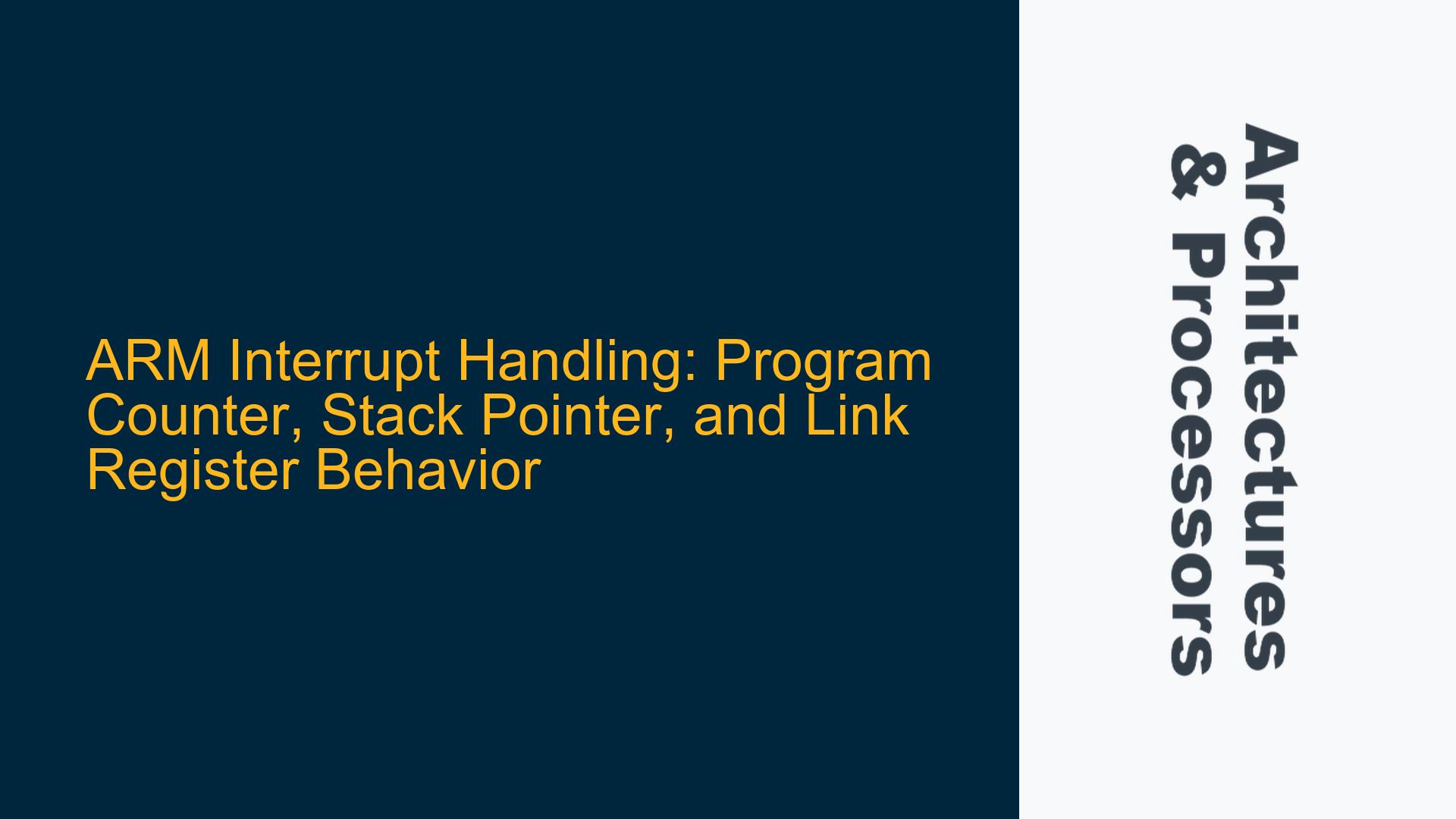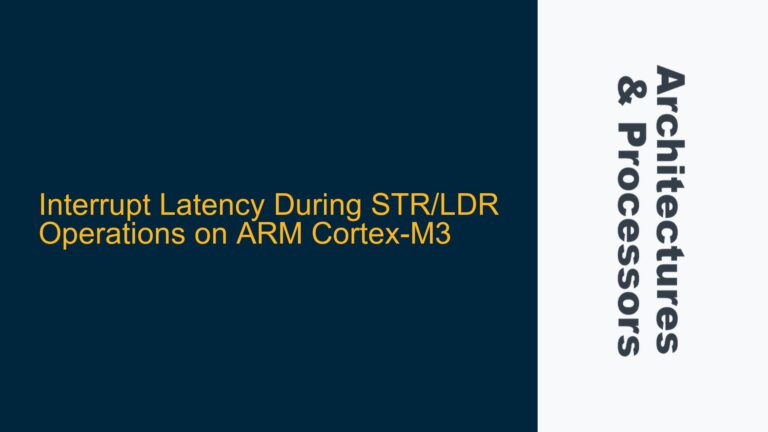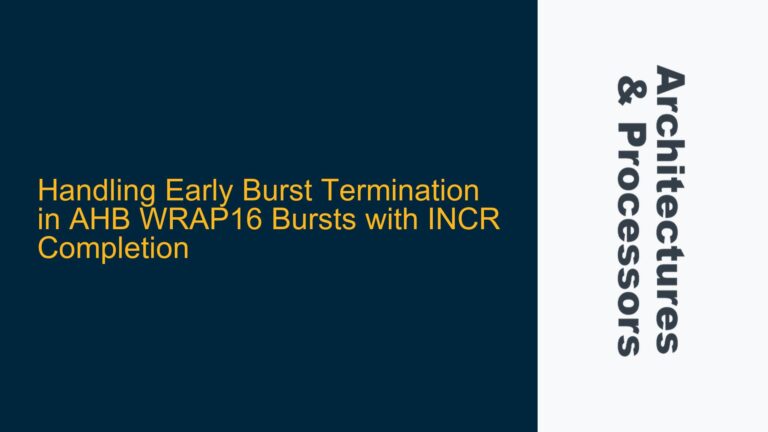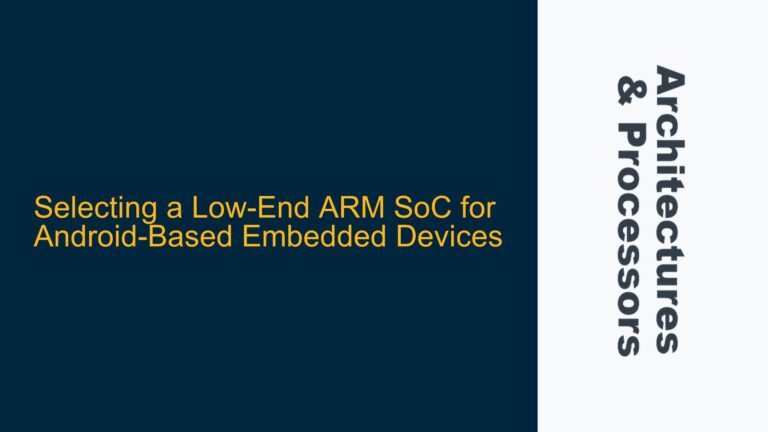ARM Cortex-M Interrupt Context Switching: Register State Changes
When an interrupt occurs in an ARM-based processor, the architecture performs a series of automatic actions to save the current execution context and transition to the interrupt service routine (ISR). The Program Counter (PC/R15), Stack Pointer (SP/R13), and Link Register (LR/R14) are critical registers that undergo specific changes during this process. Understanding their behavior is essential for debugging interrupt-related issues, optimizing ISR performance, and ensuring reliable system operation.
In ARM Cortex-M processors, the interrupt handling mechanism is designed to minimize latency and simplify software development. When an interrupt is triggered, the processor hardware automatically saves key registers onto the stack, updates the PC to point to the ISR, and modifies the LR to facilitate a correct return from the interrupt. The exact behavior depends on the processor mode (Thread or Handler) and the specific ARM architecture version (e.g., ARMv7-M, ARMv8-M).
The SP plays a crucial role in context switching. In ARM Cortex-M, there are two stack pointers: the Main Stack Pointer (MSP) and the Process Stack Pointer (PSP). The MSP is used in Handler mode (e.g., during interrupts), while the PSP is typically used in Thread mode. During an interrupt, the processor automatically switches to the MSP if it was using the PSP, ensuring that the interrupt handler has a dedicated stack space.
The LR is modified to store a special value known as the EXC_RETURN value. This value encodes information about the state to restore after the ISR completes, including the stack pointer to use (MSP or PSP) and the processor mode to return to (Thread or Handler). The EXC_RETURN mechanism simplifies interrupt return operations and ensures proper context restoration.
The PC is updated to point to the ISR address, which is determined by the interrupt vector table. The vector table contains the addresses of all ISRs, and the processor uses the interrupt number to index into this table and fetch the correct ISR address.
Stack Corruption, Incorrect EXC_RETURN, and Vector Table Misconfiguration
Several issues can arise during interrupt handling, often manifesting as hard faults, unexpected behavior, or system crashes. One common cause is stack corruption, which can occur if the stack pointer is incorrectly initialized or if the ISR consumes more stack space than available. Stack corruption can lead to overwritten memory, incorrect EXC_RETURN values, or even invalid program execution.
Incorrect EXC_RETURN values are another frequent source of problems. If the LR is modified incorrectly within the ISR, the processor may attempt to return to an invalid address or restore an incorrect context. This can happen if the ISR manipulates the LR directly or if there is a mismatch between the expected and actual processor state.
Vector table misconfiguration can prevent the processor from locating the correct ISR. If the vector table is not properly aligned, contains incorrect addresses, or is not mapped to the correct memory location, the processor may jump to an invalid address when an interrupt occurs. This can result in a hard fault or undefined behavior.
Other potential causes include nested interrupt handling issues, where the processor fails to properly manage multiple interrupts, and priority inversion, where a lower-priority interrupt blocks a higher-priority one. These issues can lead to increased latency, missed interrupts, or system deadlocks.
Debugging Stack Issues, Validating EXC_RETURN, and Correcting Vector Table Configuration
To troubleshoot and resolve interrupt handling issues, a systematic approach is required. Start by verifying the stack configuration. Ensure that the stack pointer is correctly initialized and that sufficient stack space is allocated for both Thread and Handler modes. Use debugging tools to monitor stack usage and detect potential overflows.
Next, validate the EXC_RETURN value. When entering an ISR, the LR should contain a valid EXC_RETURN value. Use a debugger to inspect the LR before and after the ISR execution. Ensure that the ISR does not inadvertently modify the LR and that the return sequence correctly restores the context.
Check the vector table configuration. Verify that the vector table is correctly aligned, contains valid ISR addresses, and is mapped to the appropriate memory location. Use the processor’s reference manual to confirm the required alignment and address range for the vector table.
For nested interrupt handling, ensure that the interrupt priorities are correctly configured and that the processor’s nested vectored interrupt controller (NVIC) is properly initialized. Use the NVIC registers to set interrupt priorities and enable/disable interrupts as needed.
Finally, consider using hardware features such as the Memory Protection Unit (MPU) to prevent stack corruption and invalid memory accesses. The MPU can be configured to protect critical memory regions, including the stack and vector table, from unauthorized access.
By following these steps and leveraging the available debugging tools, you can identify and resolve interrupt handling issues in ARM-based processors, ensuring reliable and efficient system operation.






